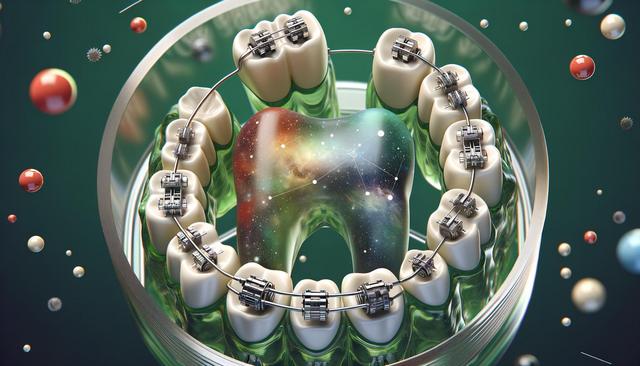Braces for Children (Ages 6-11)
Early orthodontic evaluation is often recommended around age seven, as this is when permanent teeth begin to emerge. For children aged 6-11, dental braces can guide proper jaw development, address bite issues, and prevent more severe orthodontic problems later in life. Interceptive orthodontic treatment at this stage may involve partial braces, space maintainers, or expanders. These options are usually less invasive and more focused on setting a healthy foundation for future dental development.
Common issues addressed in this age group include:
- Crossbites and underbites
- Severe crowding or spacing
- Thumb-sucking effects
- Early or late loss of baby teeth
Because children’s jaws are still growing, they tend to respond well to orthodontic treatment. The goal during this phase is not always perfect alignment but creating the right conditions for future tooth movement. Early intervention may reduce the need for more complex treatment in adolescence or adulthood.
Teenage Years (Ages 12-16)
The teenage years are the most common time for orthodontic treatment, as most or all permanent teeth have erupted. At this stage, dental braces can be highly effective in correcting misalignment, gaps, and bite problems. Traditional metal braces remain a popular choice, but many teens opt for less noticeable options such as ceramic braces or clear aligners, depending on their needs and preferences.
Benefits of treatment during this age group include:
- Improved confidence and appearance during formative years
- Efficient tooth movement due to ongoing jaw growth
- Wide range of treatment options to suit lifestyle and aesthetic considerations
Orthodontists often recommend full braces during this period, as it allows for comprehensive correction of alignment issues. Compliance with instructions, such as wearing elastics or aligners properly, can significantly impact the success of the treatment.
Young Adults (Ages 17-25)
For individuals aged 17-25, dental braces offer the opportunity to refine or complete the orthodontic work that may have begun in adolescence or to address issues for the first time. At this age, treatment is still relatively efficient because bone growth has only recently stabilized. Many young adults choose clear aligners or discreet bracket systems to maintain a professional or mature appearance while undergoing treatment.
Common concerns at this age include:
- Relapse from previous orthodontic treatment
- Desire for cosmetic improvement
- Jaw discomfort or bite misalignment
Incorporating dental braces into a busy lifestyle often involves choosing options that require fewer adjustments and allow more flexibility. Clear aligners are particularly popular in this group, as they offer a nearly invisible way to correct a variety of dental issues while fitting into academic or early career routines.
Adults (Ages 26-45)
Adults between 26 and 45 often choose to invest in dental braces as part of a broader focus on health and personal appearance. Whether correcting long-standing dental issues or improving bite function, modern orthodontic solutions cater to adult lifestyles with discreet and convenient options. Many adults are candidates for both traditional and clear systems, depending on the severity of their case and their goals.
Key factors influencing treatment at this age include:
- Desire to improve dental health and function
- Restorative dental plans that require proper alignment
- Interest in cosmetic enhancement
While adult treatment can take slightly longer due to fully developed bones, results can still be highly effective. Coordination with general dentists or other specialists may be necessary to address any pre-existing conditions, such as gum disease or tooth wear, before or during orthodontic care.
Mature Adults (Ages 45+)
Orthodontic treatment for individuals over 45 is increasingly common, especially as advancements in dental technology have made braces more comfortable and accessible. Whether addressing functional issues like bite alignment or seeking cosmetic improvements, mature adults have several options to consider. Clear aligners, lingual braces, or ceramic brackets can provide subtle yet effective treatment paths.
Special considerations for this age group may include:
- Bone density and gum health
- Previous dental work such as crowns or implants
- Slower tooth movement compared to younger individuals
Despite these factors, many patients in this age group experience noticeable improvements in both function and appearance. A tailored treatment plan that considers overall oral health and lifestyle can lead to highly satisfying results. Regular communication with your orthodontist helps ensure that treatment goals are met safely and effectively.
Conclusion: Finding the Right Fit at Every Age
From childhood through later adulthood, dental braces offer a pathway to improved oral health and a more confident smile. Each age group has unique needs and considerations, but modern orthodontic techniques make it possible to find a suitable option at any stage of life. Whether you are exploring preventive care for a child, pursuing cosmetic improvements as a teen or young adult, or addressing long-standing issues in adulthood, consulting with a qualified orthodontic provider is the first step toward a well-aligned smile. Personalized care, informed decisions, and realistic expectations are key to successful treatment outcomes at every age.






